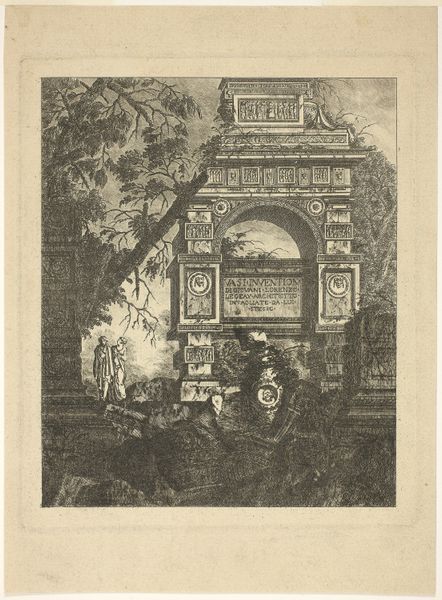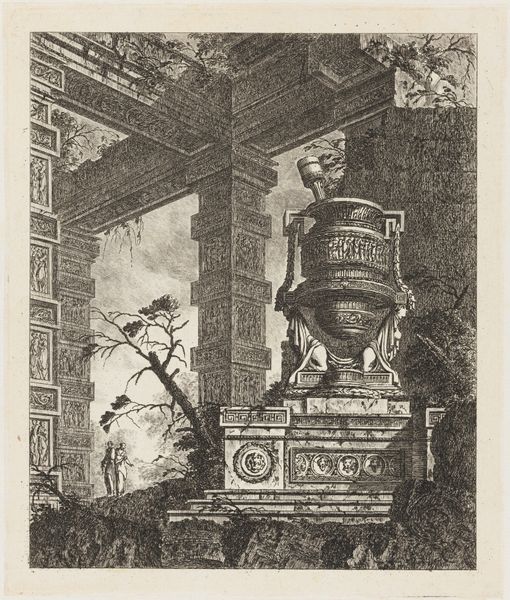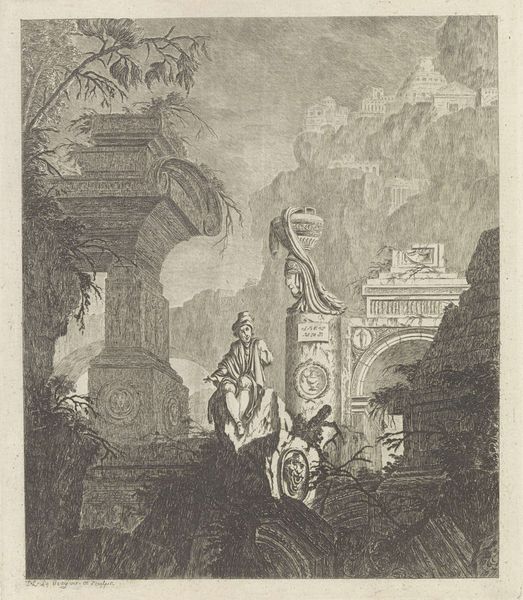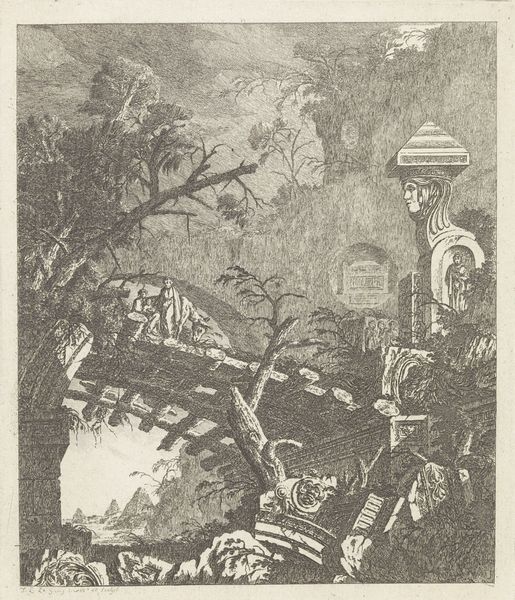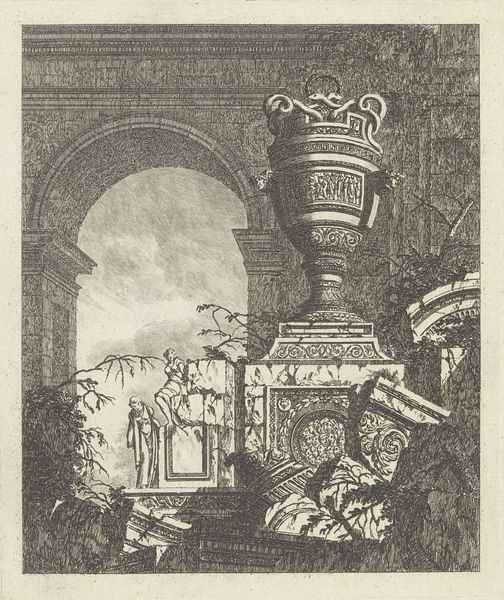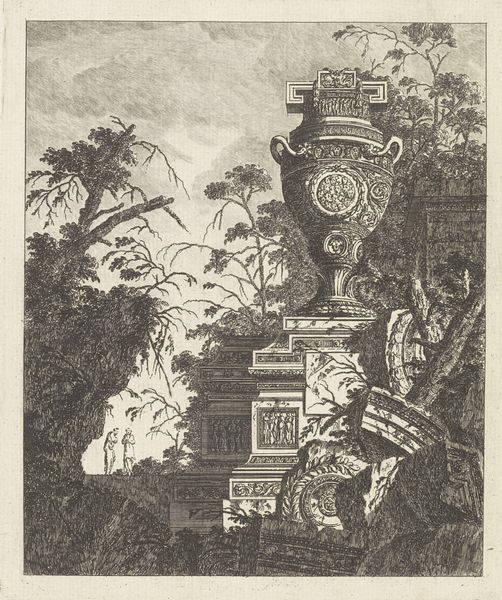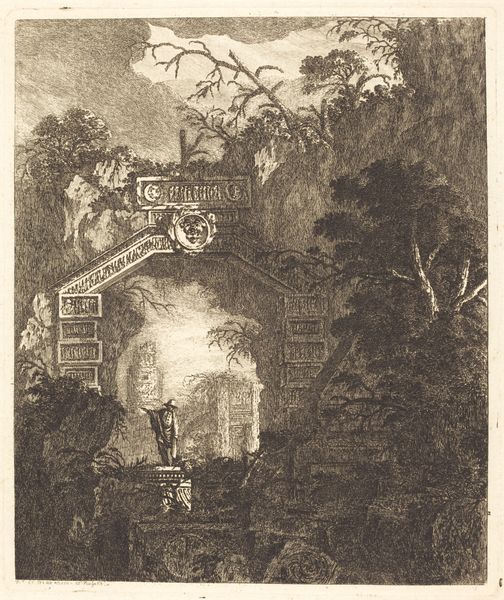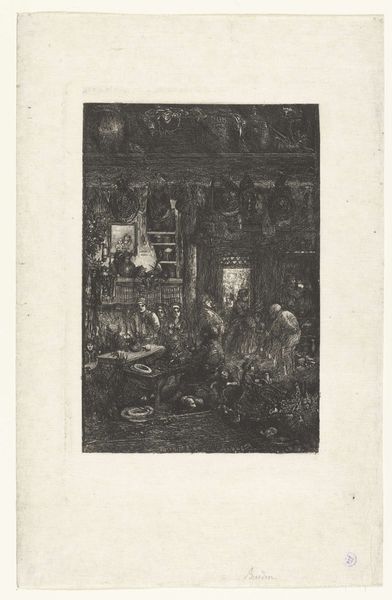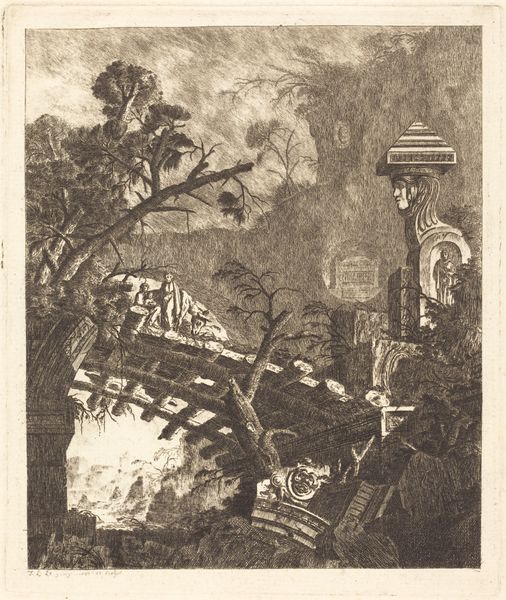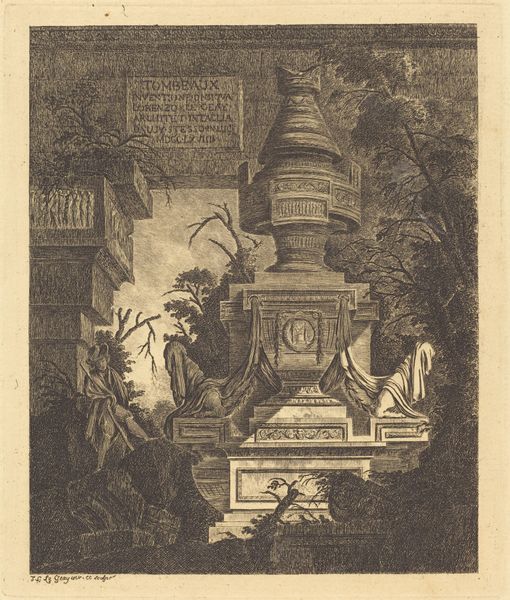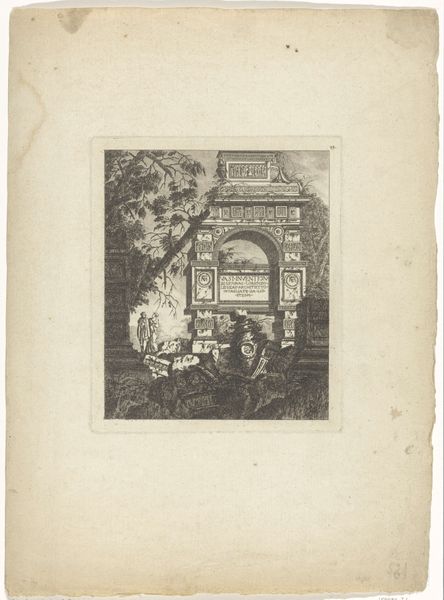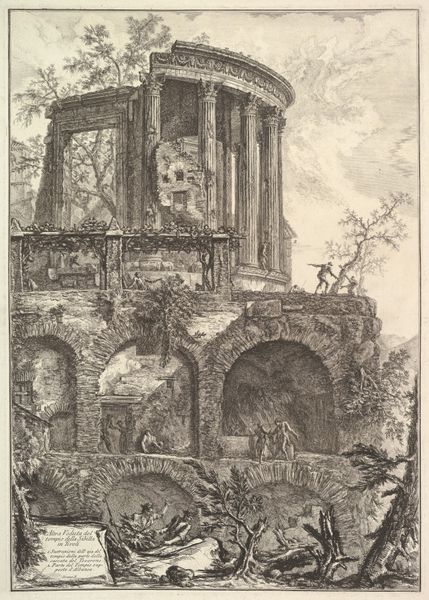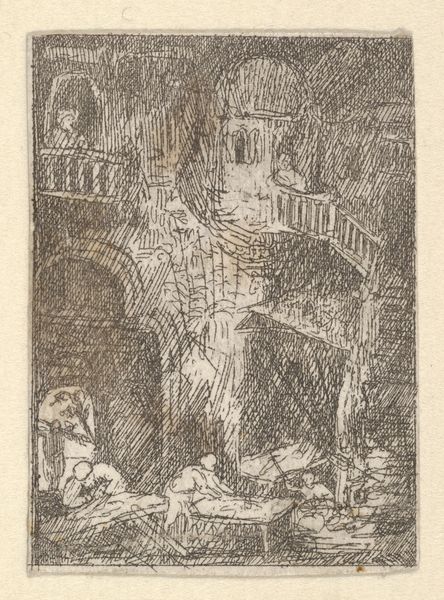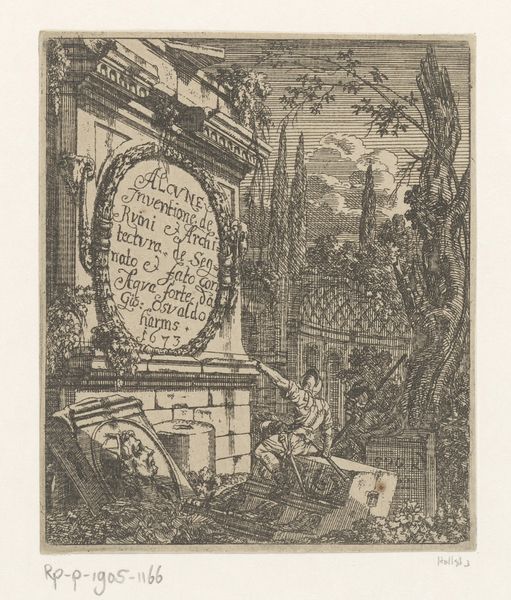
Dimensions: height 195 mm, width 165 mm
Copyright: Rijks Museum: Open Domain
Curator: I'm immediately struck by the ghostly stillness. It's like stumbling upon a forgotten stage set after the play's long ended. Melancholy, perhaps? Editor: Absolutely. This etching by Jean Laurent Legeay, created sometime between 1767 and 1770, presents a ruined gate—or, as it’s known, "Ruïne van een poort". What Legeay captures here is a particular fascination with the ruins of antiquity during the rise of neoclassicism. It embodies a historical reflection but also speaks to larger themes of power and decay. Curator: Decay is definitely the operative word. The contrast is really evocative: these figures lingering by shattered grandeur. I almost feel like I'm looking into a fever dream someone had after eating too much pasta. Is that just me? Editor: Not at all! It is, indeed, quite dreamlike. Considering the Neoclassical revival's preoccupation with order and reason, presenting a ruin evokes something disruptive. Here, this imagery could even reflect anxieties surrounding empire and historical legacies. Legeay also integrates elements of Baroque style with his take on landscape. Curator: I didn't even think of that! But yeah, now that you say it, this piece captures anxieties, as well as fantasies, about history in such a striking way. The figures appear to contemplate the structure but are dwarfed by it, reminding viewers of the unstoppable passing of time and power shifts. Editor: Precisely. Legeay doesn’t just depict a pretty scene; he uses architecture to ask tough questions. Ultimately, this piece reflects complex intersections between history, aesthetics, and perhaps the subliminal dread underlying aspirations of building and maintaining power. Curator: I agree! What seemed at first like a simple cityscape actually unveils such layered, thought-provoking meditations, just quietly waiting beneath the surface. Editor: Right. Legeay provides insight into how societies grapple with the grandeur, decay, and specters of past eras. It reminds me to challenge conventional ways of interpreting historical artworks by digging deep and uncovering broader human anxieties that have and continue to shape history.
Comments
No comments
Be the first to comment and join the conversation on the ultimate creative platform.
